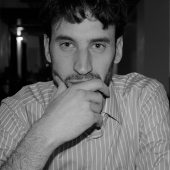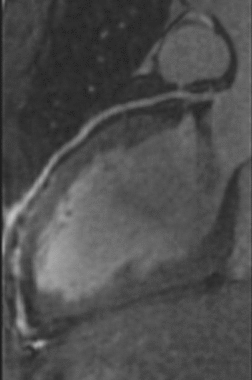
Dipl.-Ing. Davide Piccini
Alumnus of the Pattern Recognition Lab of the Friedrich-Alexander-Universität Erlangen-Nürnberg
Development of algorithms for respiratory motion correction in coronary MRI

Respiratory motion is the major source of artifacts in ECG-triggered cardiac MRI. Free breathing techniques featuring hardware or software devices such as respiratory belts or pencil beam navigators can minimize respiratory artifacts and reduce the need for patient cooperation. These techniques, however need to make use of empirical correction factors and can be affected by hysteretic effects, non ideal positioning of the navigator and temporal delays. Moreover, irregularities in the breathing pattern usually lead to prolonged scan times and reduced acquisition efficiency. Self-navigated, free-breathing, whole heart 3D radial coronary MRI potentially overcomes these drawbacks.
ECG-triggered coronary MR angiography (CMRA) has improved under many aspects in the recent years. Free-breathing imaging applied to this context is desirable for a number of reasons. First, it is comfortable for the patient because it does not
require long and repeated breathholds and makes therefore possible the examination of pediatric patients and of patients that have difficulties in maintaining even a short breathhold. Second, the acquisition time does not need to be constrained to a breathhold window and can therefore be noticeably increased. Eventually, free-breathing acquisitions are commonly considered to be more clinically relevant than extended breathholds, as the latter can lead to poorly understood changes in blood flow and pressure in the region of the heart.
The well established use of beam navigators, usually placed on the dome of the right hemidiaphragm, features a real time prospective tracking of the respiratory motion in the direction of its main motion pattern; namely the Superior-Inferior (SI) orientation. This method allows the definition of a respiratory gating window so that the data that are acquired outside this window are rejected and remeasured in the following R-R interval. This kind of approach, which assumes a linear relationship with a fixed and patient-independent correction factor between the SI displacements of the diaphragm and the heart, needs to make use of very small acceptance windows - typically 5 mm - and results therefore in a reduced scan efficiency of 30-50 % and prolonged scan times. Even though navigator-gated techniques are generally efficient in minimizing the artifacts caused by respiratory motion, they bear a number of shortcomings. First, the correlation between the measured navigator position and the actual position of the
heart might be adversely affected by hysteretic effects, imprecise navigator positioning and temporal delays between the navigators and the image acquisition. Second, irregular breathing patterns may heavily worsen the scan efficieny and prolong the exam time. Third, an extensive scout scanning before image acquisition is required.
The goal of this project is the development of algorithms for motion detection and correction which could be intrinsically integrated in the image acquisition and overcome the shortcomings of the current gold standards. A minimal pre-scan
planning and maximum acquisition efficiency are desired.




